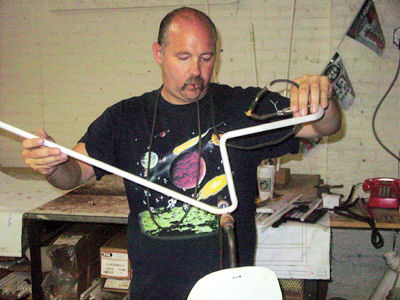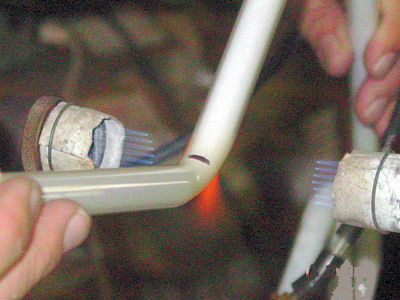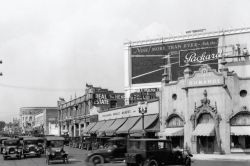How It's Done
Freehand!


A short history of Neon
Gathered from various sources
The theory behind neon sign technology dates back to 1675 before the age of electricity, when the French astronomer Jean Picard observed a faint glow in a mercury barometer tube. When the tube was shaken a glow called barometric light occurred, but the cause of the light (static electricity) was not understood at that time. Even though the cause of barometric light was not yet understood, it was investigated. Later, when the principles of electricity were discovered, scientists were able to move forward towards the invention of many forms of lighting.
In 1855, the Geissler tube was invented, named after Heinrich Geissler, a German glassblower and physicist. The importance of the Geissler tube was that after electrical generators were invented, many inventors began conducting experiments with Geissler tubes, electric power, and various gases. When a Geissler tube was placed under low pressure and electrical voltage was applied, the gas would glow.By 1900, after years of experiments, several different types of electric discharge lamps or vapor lamps had been invented in Europe and the United States. Simply defined the electric discharge lamp is a lighting device consisting of a transparent container within which a gas is energized by an applied voltage, and thereby made to glow.
Georges Claude — inventor of the first neon lamp
The word neon comes from the Greek "neos," meaning "the new gas." Neon gas was discovered by William Ramsay and Morris Travers in 1898 in London. Neon is a rare gaseous element present in the atmosphere to the extent of one part in 65,000 of air. It is obtained by liquefaction of air and separated from the other gases by fractional distillation.
The French engineer, chemist, and inventor Georges Claude was the first person to apply an electrical discharge to a sealed tube of neon gas (circa 1902) to create a lamp. Georges Claude displayed the first neon lamp to the public on December 11, 1910, in Paris and patented the neon lighting tube on Jan. 19th, 1915 — U.S. Patent 1,125,476.
In 1923, Georges Claude and his French company Claude Neon, introduced neon gas signs to the United States, by selling two to a Packard car dealership in Los Angeles. Earle C. Anthony purchased the two signs reading "Packard" for $24,000. Neon lighting quickly became a popular fixture in outdoor advertising. Visible even in daylight, people would stop and stare at the first neon signs, dubbed "liquid fire."
The technical Information for this page was written by Daniel Preston who is an inventor, an engineer, a member of the technical committee of the International Neon Association and the owner of Preston Glass Industries. We have provided links to Wikipedia for additional reading.
1745 Route 9 #4, Toms River, New Jersey 08755 · 973-772-4840 · info@njneon.com · NJNeon.com
Design and hosting by Dynamic Resources
